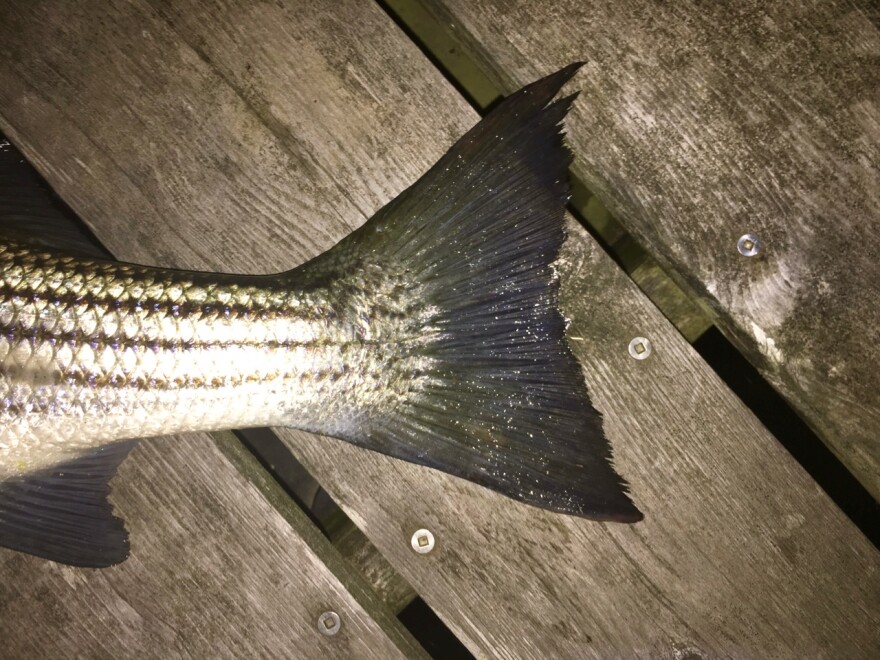Birds aren’t the only species migrating in our area. Fish are also on the move. And around the Cape and Islands, there’s one particular fish whose whereabouts are a fixation for most anglers: striped bass.
This is the moment when striped bass, and many other fish, start showing up again in our waters. Kevin Blinkoff, of On The Water magazine, talked with me about striped bass migration this week.
Stripers travel south in the late fall, when they leave the Northeast. In the spring, most of the striped bass population spawns in Chesapeake Bay; there's also a population that spawns in the Hudson and the Delaware Rivers.
“If you remember, we had quite a bit of cold weather back in April,” Blinkoff said. “That's when the striped bass usually start to spawn in the Chesapeake. That cold weather delayed them quite a bit. And as a result, the big fish have been a little slow to arrive on Cape Cod.”
Striped bass, Blinkoff said, are variable spawners. Some years they'll have a very big year class, and that'll replenish the population. Other years, they'll have a very poor spawn. “It seems to be very much connected to the weather,” Blinkoff said. “Wet, rainy weather in the springtime tends to help the young striped bass survive. Drier weather sometimes does not.”
Those big spawning classes are what replenishes the population. And we see it reflected in the fish that we catch. For example, there was a very successful spawn in 2011. This year fishermen are going to be catching a lot of these fish, which are around 30 inches now. And we’ll be seeing a lot of fish that were born in 2015 (another good spawning year), which are now 14-16 inch schoolies.
There’s more good info, along with a roundup of the fishing action, in this week’s Fishing News. The audio is posted above. Give it a listen.








